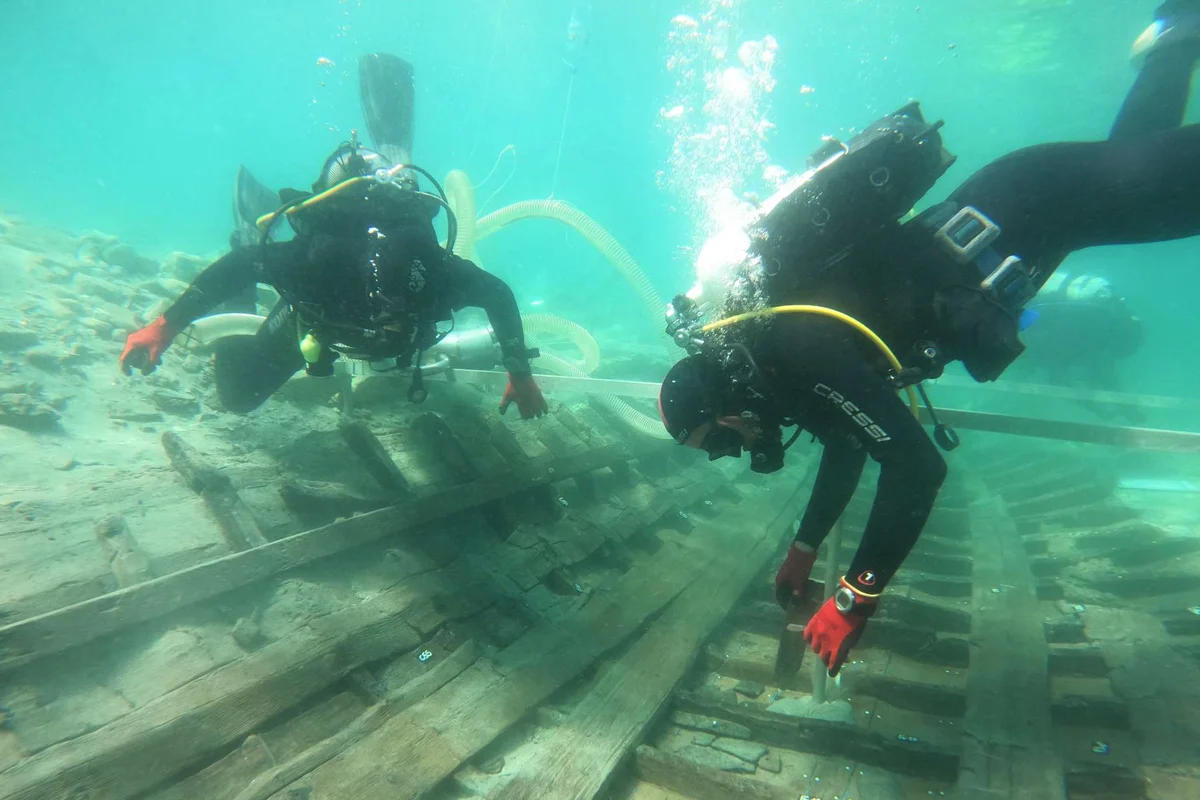A multi-national team of underwater archaeologists have been unearthing an exceptionally well-preserved Roman shipwreck in Barbir Bay near Sukošan, Coatia.
According to experts, the shipwreck dates from the 1st to 2nd century AD, which was first identified in 2021 during investigations of a Roman-era harbour.
Measuring 12.5 metres (40 feet) long, the shipwreck was found with hundreds of olive pits, indicating that it likely served as a trading vessel in the Adriatic Sea. Excavations of the port area also uncovered the remains of grapes, peaches, and walnut shells, suggesting that the port was a centre in agricultural trade, possibly for a nearby Roman estate.
“The very well-preserved ship structure contains many elements of the ship’s upper works, which represents a rare find in ship architecture when researching ancient shipwrecks,” said the International Centre for Underwater Archaeology in Zadar.

The ship structure was completely cleaned and documented for the creation of photogrammetric models. Recovered wooden elements, combined with 3D modelling, will enable the researchers to reconstruct how the ship originally looked like, as well as reveal new insights into the ship’s navigational capabilities during the Roman period.
“This is a very precise and stable type of ship construction, capable of carrying heavy loads and sailing medium to long distances. Such vessels were essential for life along our coast and islands two thousand years ago,” explained Anton Divić, owner of the Croatian underwater archaeology company NavArchos.
The study involved specialists from the University of Toruń, the Max Planck Institute, Aix-Marseille University, the French company Ipso Facto, and the Croatian firm NavArchos.
Header Image Credit : R. Scholz
Sources : International Centre for Underwater Archaeology in Zadar

